

Calcaire détritique
Définition
Les roches sont classées en trois grandes catégories: les roches sédimentaires (argiles, calcaires, marnes, etc.), les roches magmatiques (granites, diorites, basaltes, andésites, etc.) et les roches métamorphiques (schistes, gneiss, marbres, etc.).
Nous sommes ici en présence d'un calcaire.
Une roche sédimentaire suit le cycle suivant:
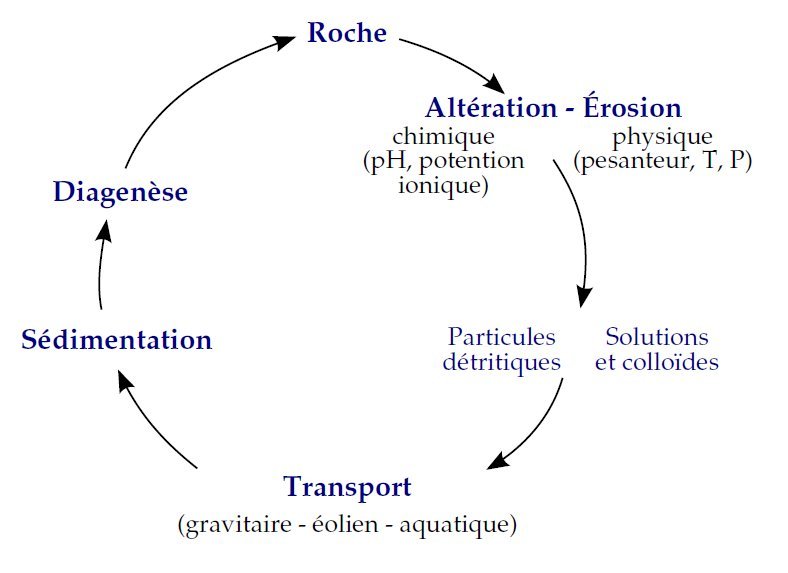
Une roche sédimentaire détritique est une roche composée d'au moins 50 % de débris.
Si les débris sont issus de l'érosion d'autres roches, alors on la qualifie de roche détritique terrigène.
Si au contraire les débris sont formés par des squelettes d'organismes vivants alors la roche est qualifiée de biodétritique ou biogénique.
Les roches détritiques terrigènes représentent entre 80 et 90 % des roches sédimentaires. Elles sont classées en trois groupes selon la taille des débris :
- rudite (grains de taille supérieure à 2 mm)
- arénite (grains de taille entre 1/16 et 2 mm)
- lutite (grains de taille inférieure à 1/16 mm)
Qualification des débris
La description et la classification des roches détritiques se fait par l'intermédiaire de caractéristiques chimiques (que nous ne développerons pas ici), et des mesures des éléments composant cette roche.
La granulométrie

Le tri des grains

L'aspect des grains

Les joints entre les grains

Comment valider cette Earth Cache
Rappel concernant les "Earth Caches": il n'y a pas de contenant à rechercher, ni de logbook. Il suffit de se rendre sur les lieux, de répondre aux questions ci-dessous. Vous pouvez loger en "Found it" et envoyez-moi vos propositions de réponses, soit via mon profil, soit via la messagerie geocaching.com (Message Center), et je vous contacterai en cas de problème.
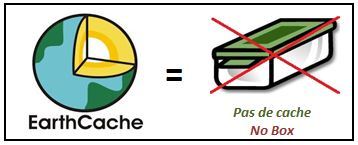
Accès
Lorsque vous êtes face au monument, faite le tour et recherchez la zone indiquée sur les photos. Les blocs constituants le monument étant homogènes, la zone à observer a peu d'importance.
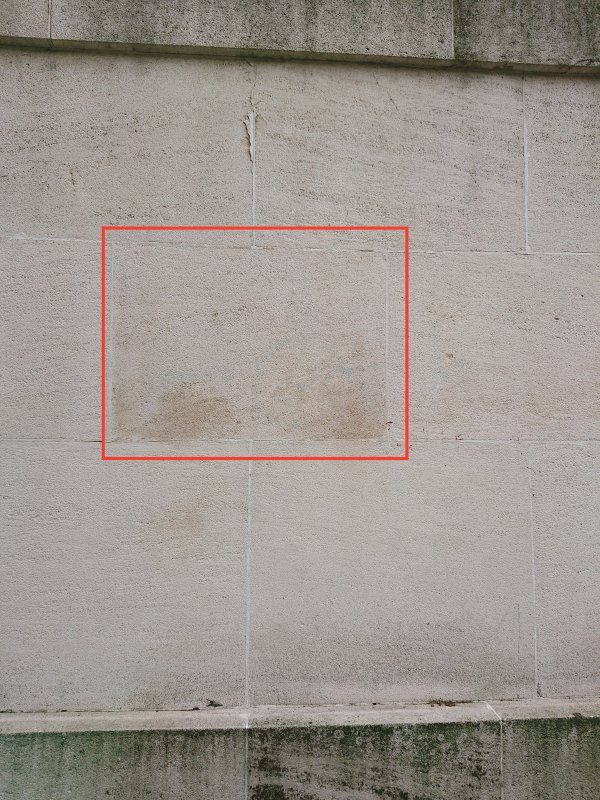
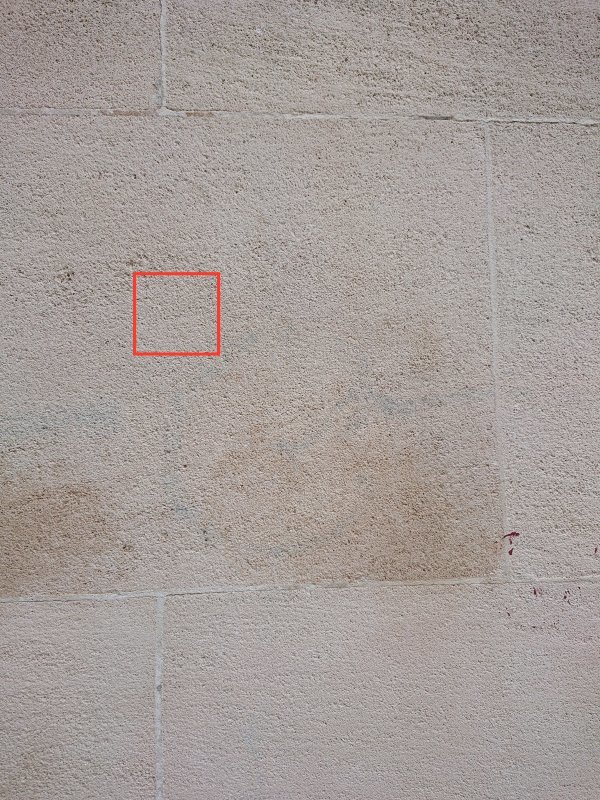
Questions
- 1 : la roche devant vous semble composée d'autres roches ou de squelettes d'organismes vivants (ou de débris de squelettes)? Qualifiez cette roche.
- 2 : d'après vos observations de la taille des débris, à quel groupe appartient cette roche?
- 3 : d'après vos observations, et en vous référant au schéma de la granulométrie, quel est le tri de ces éléments?
- 4 : d'après vos observations, et en vous référant au schéma de l'usure des grains, quelle est l'usure de ces éléments?
- 5 : d'après vos observations, et en vous référant au schéma des joints des grains, qualifiez ces joints?
- 6 : avec l'échantillon que vous avez devant les yeux, quel est la densité des débris au centimètre carré?
Une photo de vous ou d'un objet vous représentant (GPS, téléphone, TB personnel, etc.) est toujours la bienvenue!
Bonnes recherches et bon geocaching!


Detritic limestone
Definition
The rocks are classified into three major categories: sedimentary rocks (clays, limestone, marl, etc.), magmatic rocks (granites, diorites, basalts, andesites, etc.) and metamorphic rocks (schist, gneiss, marble, etc.).
We are here in the presence of a limestone.
Sedimentary rock follows the following cycle:
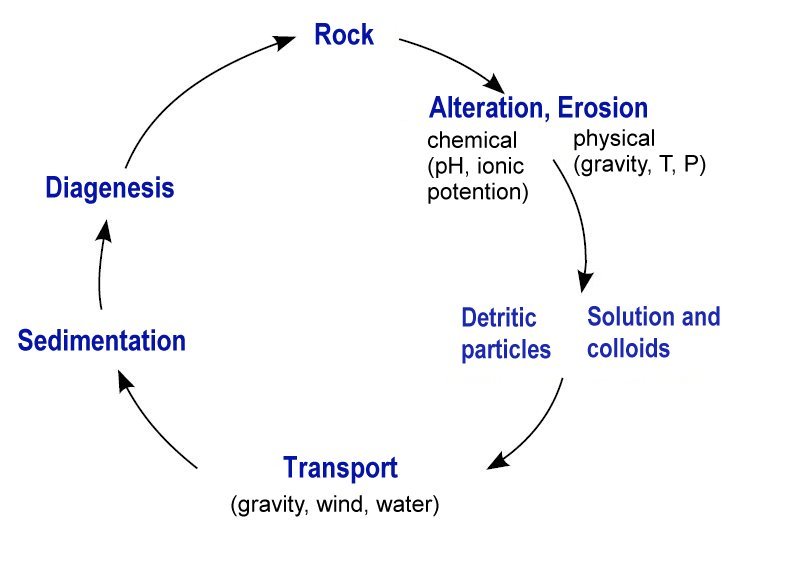
A detrital sedimentary rock is a rock composed of at least 50% debris.
If the debris is the result of the erosion of other rocks, then it is called terrigenous detritic rock.
If on the other hand the debris is formed by skeletons of living organisms then the rock is qualified as biodetitic or biogenic.
Terrigenous detritic rocks account for 80-90% of sedimentary rocks. They are classified into three groups according to the size of the debris:
- rudite (grains larger than 2 mm)
- arenite (grain size between 1/16 and 2 mm)
- lutite (grains smaller than 1/16 mm)
Debris qualification
The description and the classification of the detrital rocks is done by means of chemical characteristics (which we will not develop here), and measurements of the elements composing this rock.
The particle size

Grain sorting

The appearance of grains
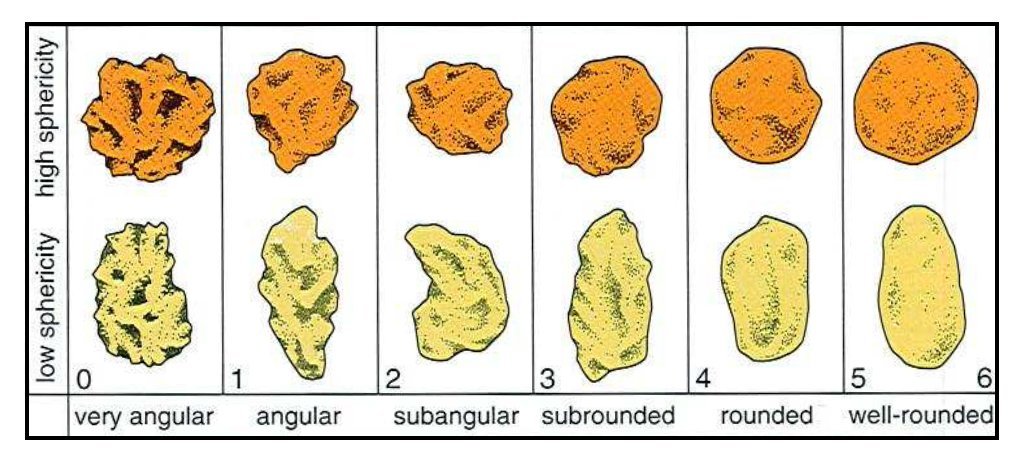
The joints between the grains
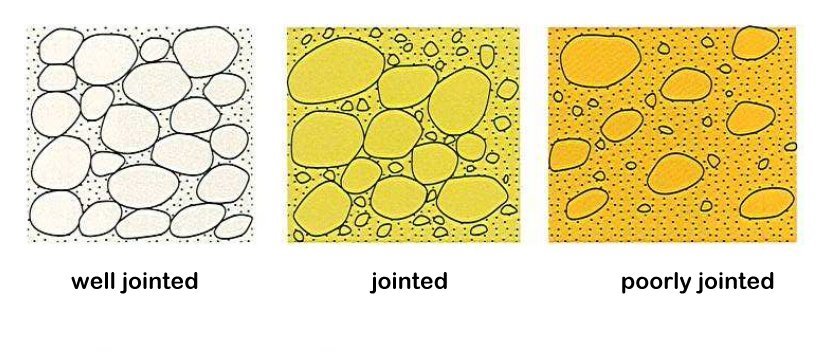
How to validate this Earth Cache
Reminder concerning "Earth Caches": there is no container to search, nor of logbook. Just go to the site, answer the questions below. below and send me the answers. You can log the Earth Cache before my return mail to your answers, I'll tell you if there is an error.

Access
When you are facing the monument, go around and look for the area shown in the photos. The blocks constituting the monument being homogeneous, the area to be observed is of little importance.


Questions
- 1: the rock in front of you seems to be made up of other rocks or skeletons of living organisms (or skeletal debris)? Qualify this rock.
- 2: based on your observations of the size of the debris, which group does this rock belong to?
- 3: according to your observations, and referring to the diagram of the grain size, what is the sorting of these elements?
- 4: from your observations, and referring to the pattern of grain wear, what is the wear of these elements?
- 5: based on your observations, and referring to the grain boundary diagram, what are these joints?
- 6: with the sample you have in front of you, what is the density of debris per square centimeter?
A photo of you or an object representing you (GPS, phone, personal TB, etc.) is always welcome!
Good research and good geocaching!